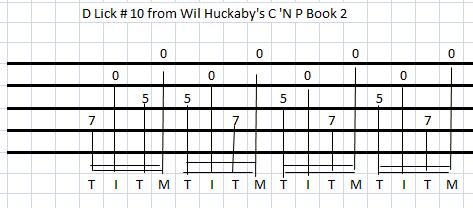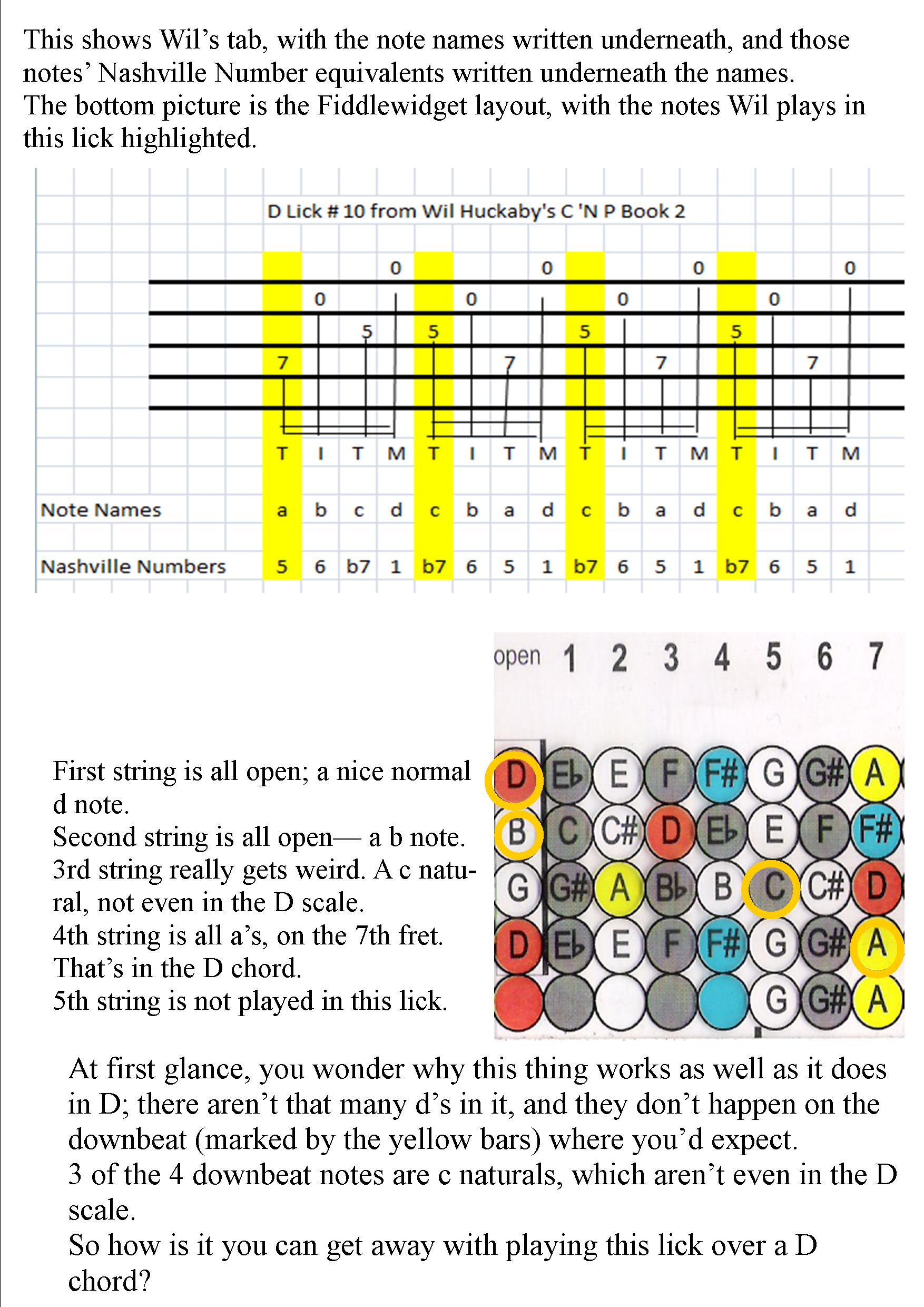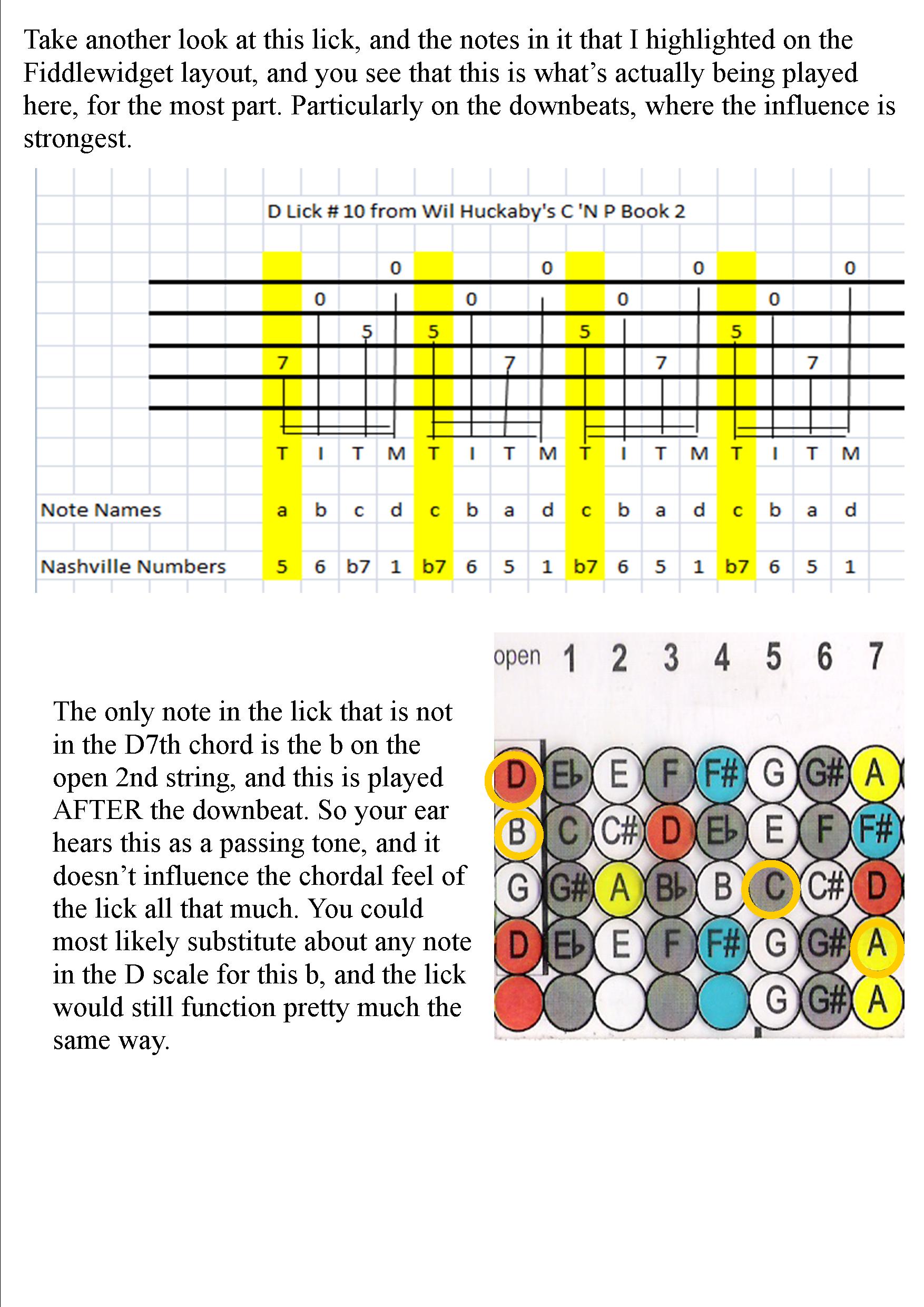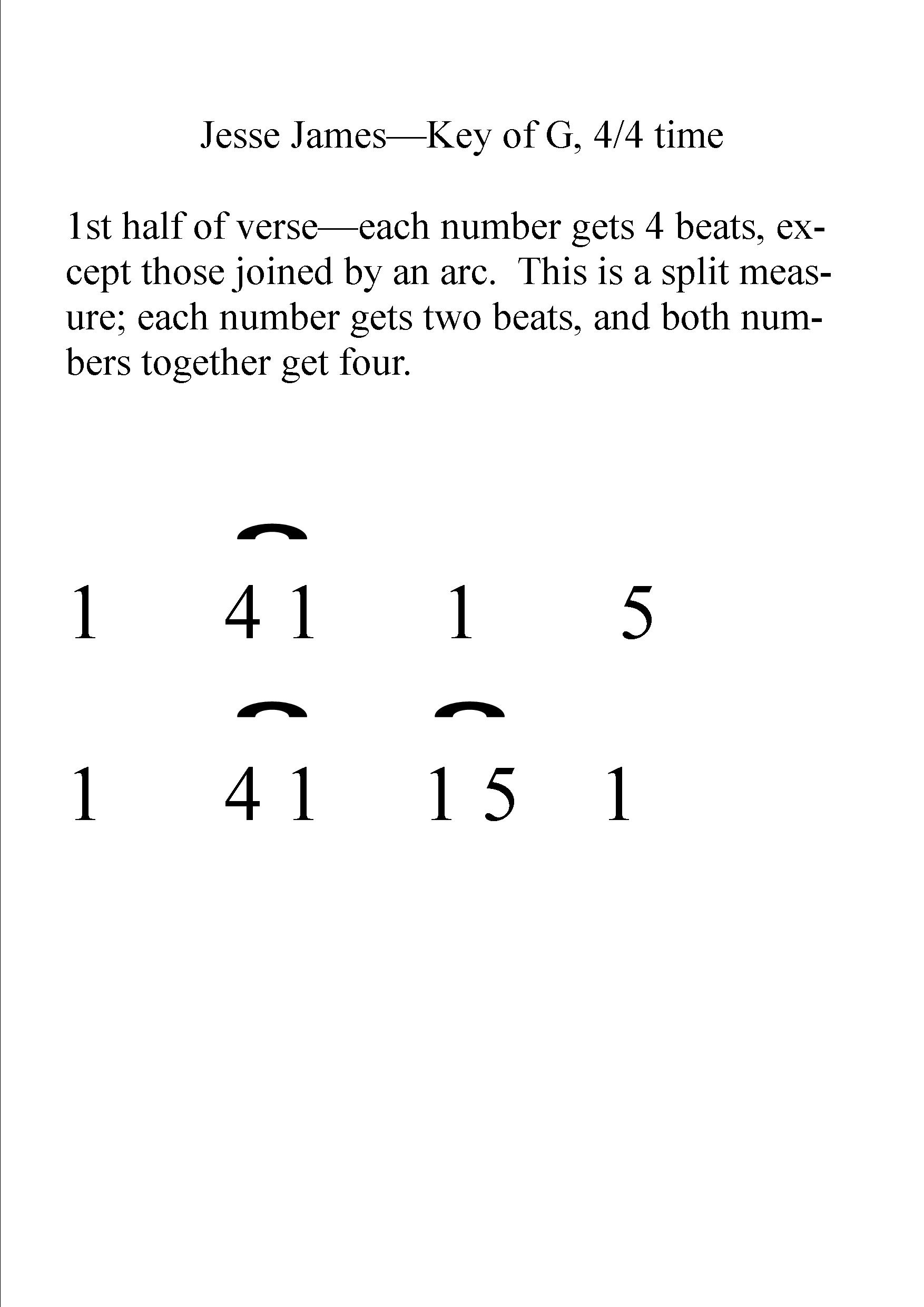Fiddlewidget
| Home | What's a Fiddlewidget? | Suppliers | Fiddlewidget University | Instruments |
Widgeteering Wil Huckaby''s double-barreled melodic banjo lick
Here's a melodic lick from Wil Huckaby's second Cut 'N Paste book. This is available from Angiesbanjo.com , and contains many, many melodic licks that can be cut apart and re-assembled any way you like, but let's just look at this one lick, designed to be played over a D chord.
It works so well that my inclination was to use this lick or some part of it about any time I wanted a melodic sound in D, and at some point I even
blundered into using it over an F chord while playing in the key of C! The tab looks like
 and it sounds like
Wil's D Lick #10
and it sounds like
Wil's D Lick #10
If you listen to the sound clip while playing a D chord on a banjo, guitar or any other instrument, you'll hear that it works well. That's all I needed to know, and I just wore that lick absolutely out, and I still do. But then one day I made a critical mistake---
When you start analyzing it, you notice there are an awful lot of notes in it that are not only not in the D chord, some of them are not even in the D scale!
I used the Fiddlewidget, set to the key of D, because I don't really have the neck memorized that well, and even if I did know all the note names I'd still have to keep up with all that Nashville system major scale layout stuff in my head. So I decided to save a few neurons and widgetize this sucker.

And maybe a better question: "Who Cares?" Why even have this discussion?
Because, maybe, if you understand why something works, you can make up other things that work.
You can create licks in any key, out of thin air.
For what it's worth, here's my thought on why this lick works in D. If you go to the chords page on this site, you'll notice that the 7th chord just takes the regular 1-3-5 pattern shown on the Fiddlewidget and adds the flatted seventh tone. You can find that easily on the Fiddlewidget; it's always two frets below the red dot.

Now here's that lick in a song--"Jesse James" in the key of G. I won't write that song out in tab, because I'm sure you won't want to play it like I do here, but I'll write out a chord chart in the Nashville format.
If you aren't familiar with the Nashville system for charting songs, I suggest Chas Williams' book or at least a quick look at the Nashville page on this site.
Basically all you do is assign each chord the number of its scale degree, and each number in the chart represents that chord played for one measure--4 downbeats in this case.
| O.K. here's the tab of the first 2 lines; the D lick happens on the 5 chord because the D is the 5 in the key of G. To view it full screen,click here Jesse James |  |
Here's what that lick sounds like in the song--you'll probably need to use headphones because I wasn't able to get the recording volume very high on this one. Jesse James |
| Wil's lick is intended for a D chord, but it also works as an F lick in the key of C. Here it is in Battle Hymn of the Republic, where it shows up in the third measure of the tab Battle Hymn Tab |  |
Here's that lick in the song--I actually played through the second line, which is not tabbed out, but you can hear a partial measue of that F lick toward the end.Use headphones to get the recording volume up. Battle Hymn mp3 |